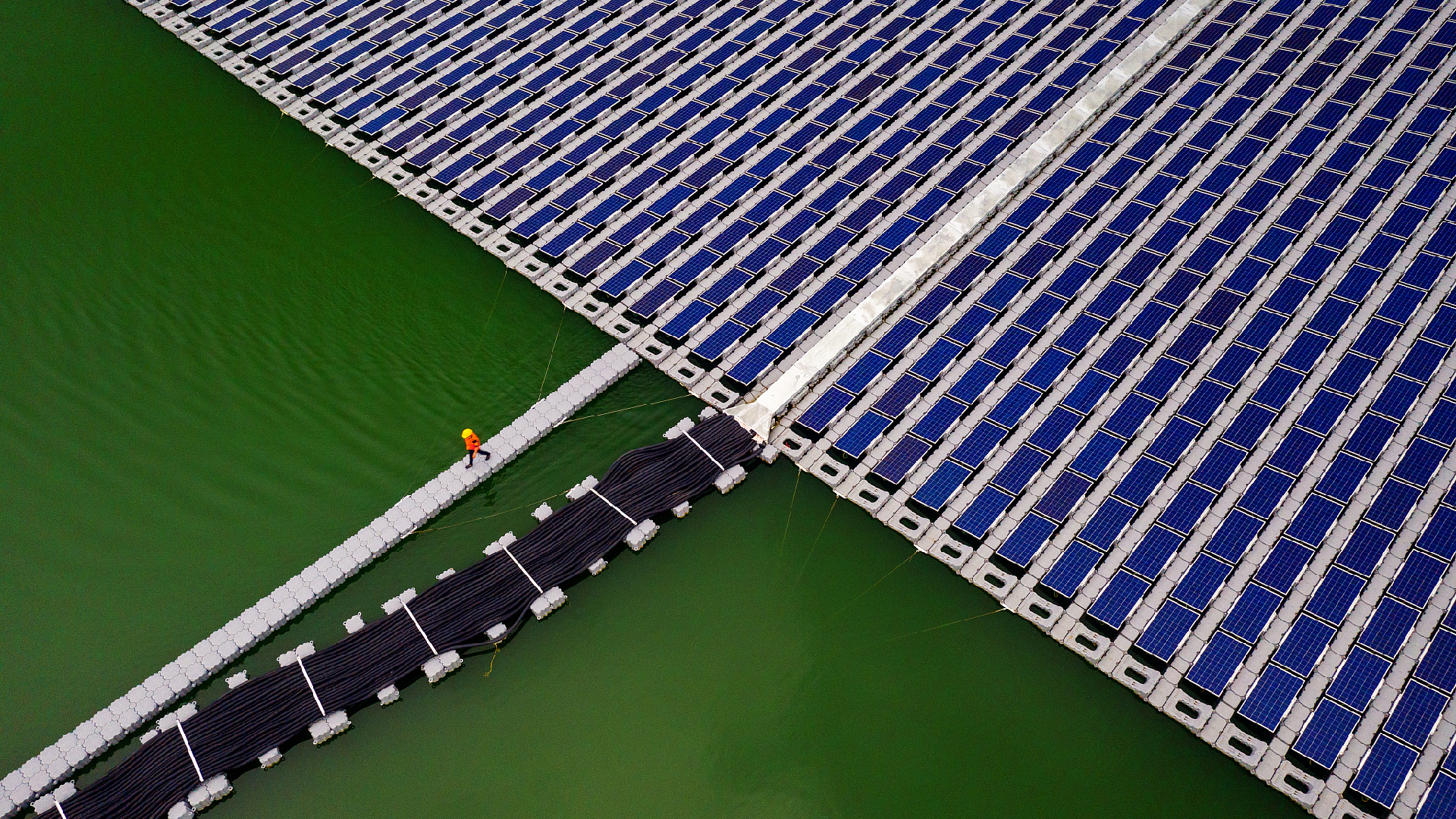New energy cooperation blossoms: China and Vietnam launch green partnership
As the world focuses on renewable energy, China and Vietnam, two vibrant neighboring economies in Asia, have been establishing robust partnerships in the field of new energy.

Both countries are undertaking significant projects in renewable energy, recognizing the need to combat climate change and explore sustainable energy sources. This has led to remarkable progress in areas such as wind power, solar energy, and electric vehicles (EVs).
**Wind Power: Harnessing the force**
In the realm of wind energy, China and Vietnam are leveraging their extensive coastlines and copious wind resources to develop this sector. Chinese firms, noted for their technological capabilities and economical solutions, have been significant contributors to the development of Vietnam's wind power industry.
Since the end of 2020, following the installation of the first Chinese wind turbine in Ninh Thuan province, China's influence in Vietnam's wind energy market has grown. The country has initiated numerous wind power projects, making Vietnam the top recipient of Chinese wind turbines.
The expansive Phu My Solar Power Plant, with a capacity of 330 megawatts, is a key component of Vietnam's National Power Development Plan 7 and the largest photovoltaic power station in central Vietnam. Located in Binh Dinh province, the plant is pivotal in the nation's shift towards renewable energy.
Constructed by the Power Construction Corporation of China, the Phu My facility is designed not just to generate power but to potentially expand into other clean energy areas such as energy storage, and even seawater desalination using renewable sources.
**Solar Power: Powering the future**
Solar energy collaboration is another area where China and Vietnam excel, due to their high solar exposure. Since 2014, Chinese companies have been instrumental in establishing a strong solar industry presence in Vietnam, with investments exceeding $2 billion to form the largest solar power cluster in the country.
However, Vietnam faces challenges in meeting its growing electricity demands, which are spurred by rapid economic growth. Le Van Luc, deputy director of the Electricity and Renewable Energy Authority, stated that the country's annual electricity imports from China and Laos are "projected to climb from the current 1,000 MW to 3,000 MW by 2025, and to 5,000 MW by 2030."
Vietnam's reliance on hydropower is dwindling, and the slower-than-anticipated development of new power projects is not helping. The anticipated operational capacity through 2030 is significantly below the targets set in the revised national electricity development plan.
**Electric Vehicles: Driving clean mobility**
The collaboration extends into the electric vehicle sector, where both countries are keen on increasing EV use. They are improving support structures, such as charging stations and battery development, through joint ventures.
The EV partnership is rapidly enhancing the transportation sector in Southeast Asia, as both China and Vietnam aim for substantial EV adoption. The collaboration has positioned both nations as emerging leaders in electric mobility, offering economic and environmental benefits.
This ongoing partnership in new energy between China and Vietnam exemplifies their joint commitment to fostering a sustainable and low-carbon future by leveraging China’s technical know-how and Vietnam’s market opportunities.As the China-Vietnam partnership strengthens, both nations are laying the groundwork for a more sustainable energy future, addressing a range of challenges in the renewable sector.
**Challenges and Opportunities in Renewable Development**
Despite the promising developments in renewable energy cooperation, both countries face significant challenges that could hinder their progress. For Vietnam, the swift pace of urbanization and industrialization has resulted in an escalating energy demand that could outstrip current and projected energy supply capabilities. Delays in project developments can exacerbate these shortages, making it imperative for Vietnam to execute its energy projects more efficiently and on schedule.
China, often seen as a technological leader in renewable energy, can play a central role in supporting Vietnam’s energy infrastructure. By facilitating knowledge transfer and technology sharing, China can aid Vietnam in addressing these pressing challenges. Additionally, improved regulatory frameworks and investment incentives will be crucial to attracting foreign investment and fostering local participation in renewable energy projects.
**Regional Collaboration and Energy Security**
The collaboration between China and Vietnam extends beyond bilateral initiatives and taps into broader regional dynamics. As Southeast Asia continues to grapple with energy security and sustainability, the partnership serves as a model for other nations within the region.
In particular, the Association of Southeast Asian Nations (ASEAN) member states can look to the China-Vietnam collaboration as a blueprint for enhancing regional energy cooperation. Establishing joint renewable energy projects and sharing best practices can lead to improved energy security, reduced dependence on fossil fuels, and increased resilience against climate change.
**The Role of Policy and Investment**
To support the ongoing transition to renewable energy, both governments will need to implement supportive policies that encourage investment, innovation, and collaboration. Tax incentives for renewable energy projects, subsidies for EV manufacturers, and grants for research into energy storage and efficiency technologies can spur growth in these sectors.
Furthermore, engaging local communities and stakeholders in the development of renewable projects will be crucial to ensuring long-term sustainability. Educational initiatives can raise awareness about the benefits of clean energy and electric mobility. By fostering a culture of sustainability among the populace, both countries can promote a collective commitment to a greener future.
**Looking Ahead**
The journey towards a renewable energy future is fraught with challenges, but the partnership between China and Vietnam represents a significant step in the right direction. Their collaborative efforts in wind power, solar energy, and electric vehicles not only promise to accelerate the transition to clean energy but also position them as key players in the global renewable energy landscape.
As both countries harness their strengths, they will not only propel their economies forward but also contribute to global climate goals. By prioritizing renewable energy and sustainable practices, China and Vietnam are setting the stage for a more resilient, environmentally friendly future—one that could inspire others to follow suit.
The synergy between these two nations illustrates the power of cooperation in tackling one of the most pressing issues of our time: the urgent need for sustainable energy solutions. As they continue to forge ahead, China and Vietnam are well-positioned to not only meet their own energy needs but also act as regional leaders in the global movement toward a more sustainable and low-carbon future.
Thomas Evans for TROIB News
Find more stories on the environment and climate change on TROIB/Planet Health












